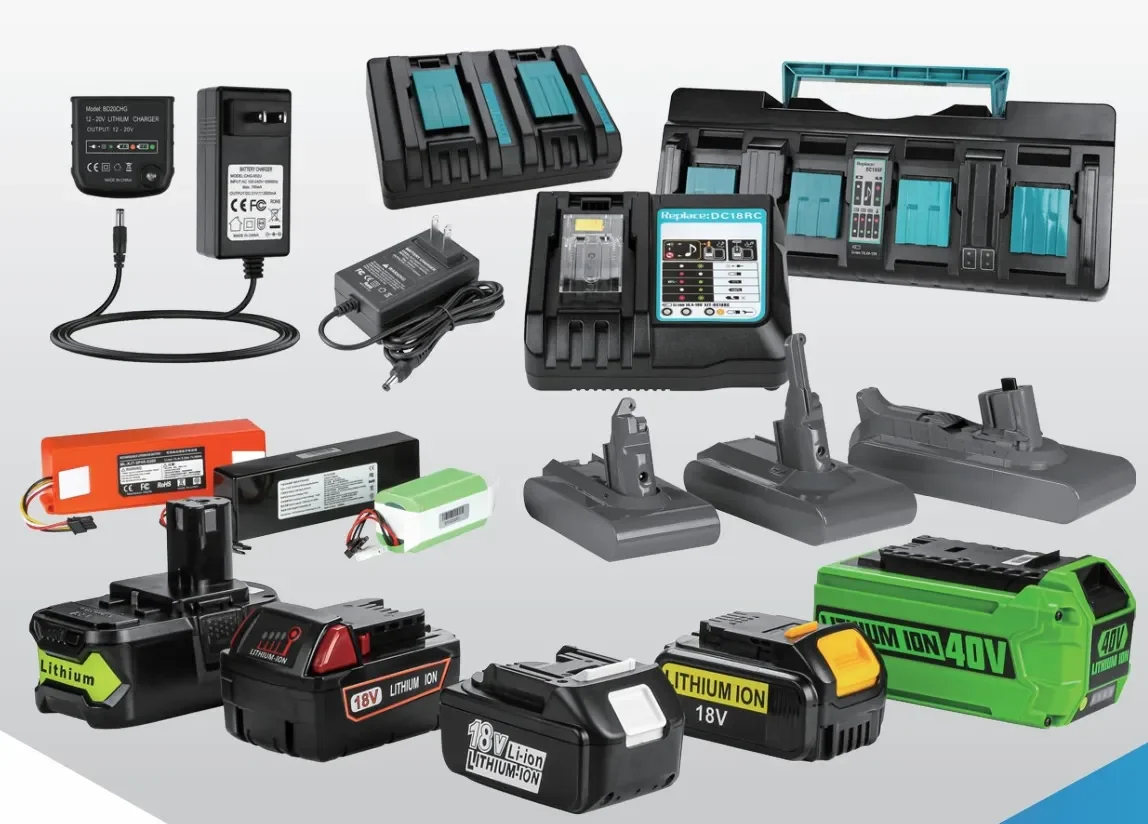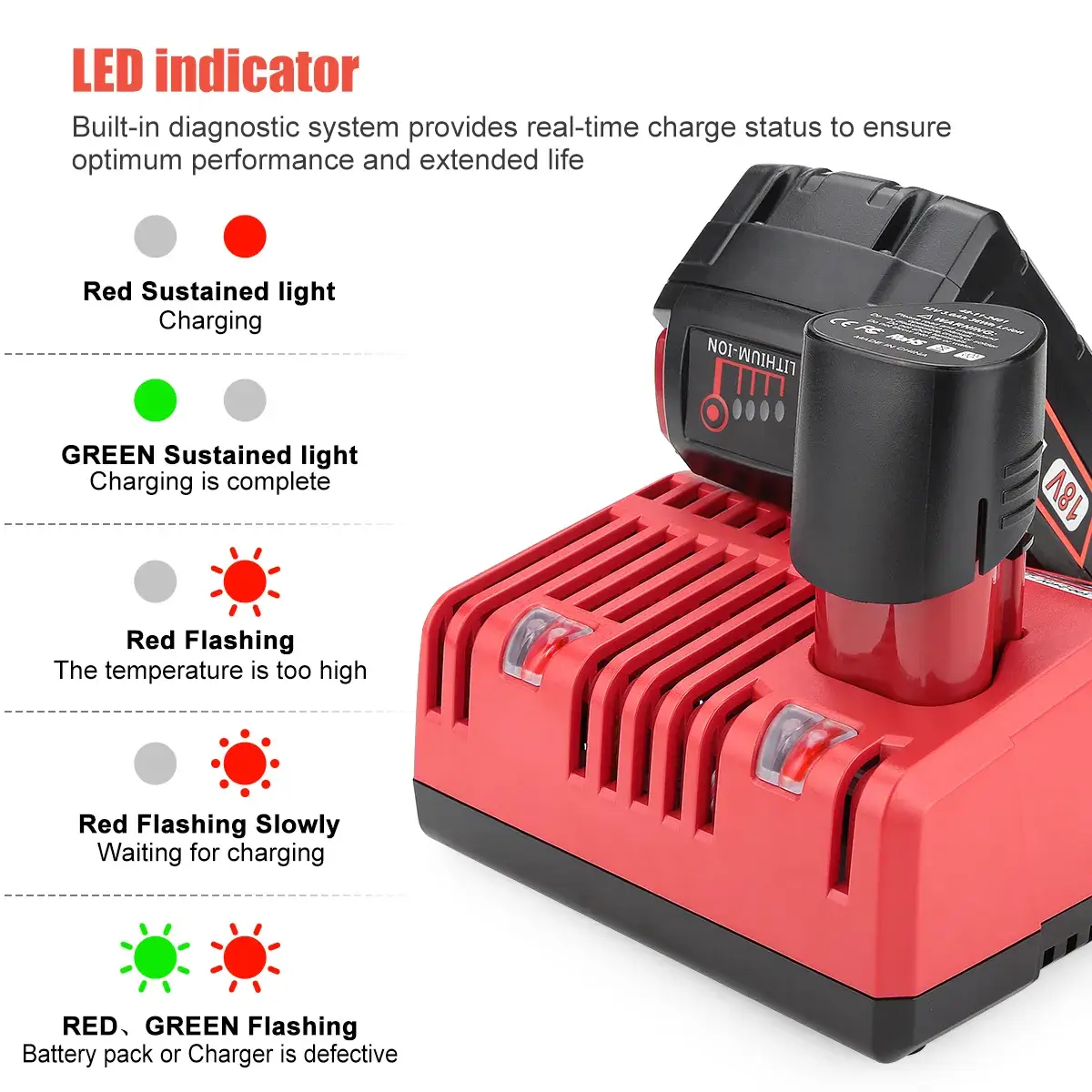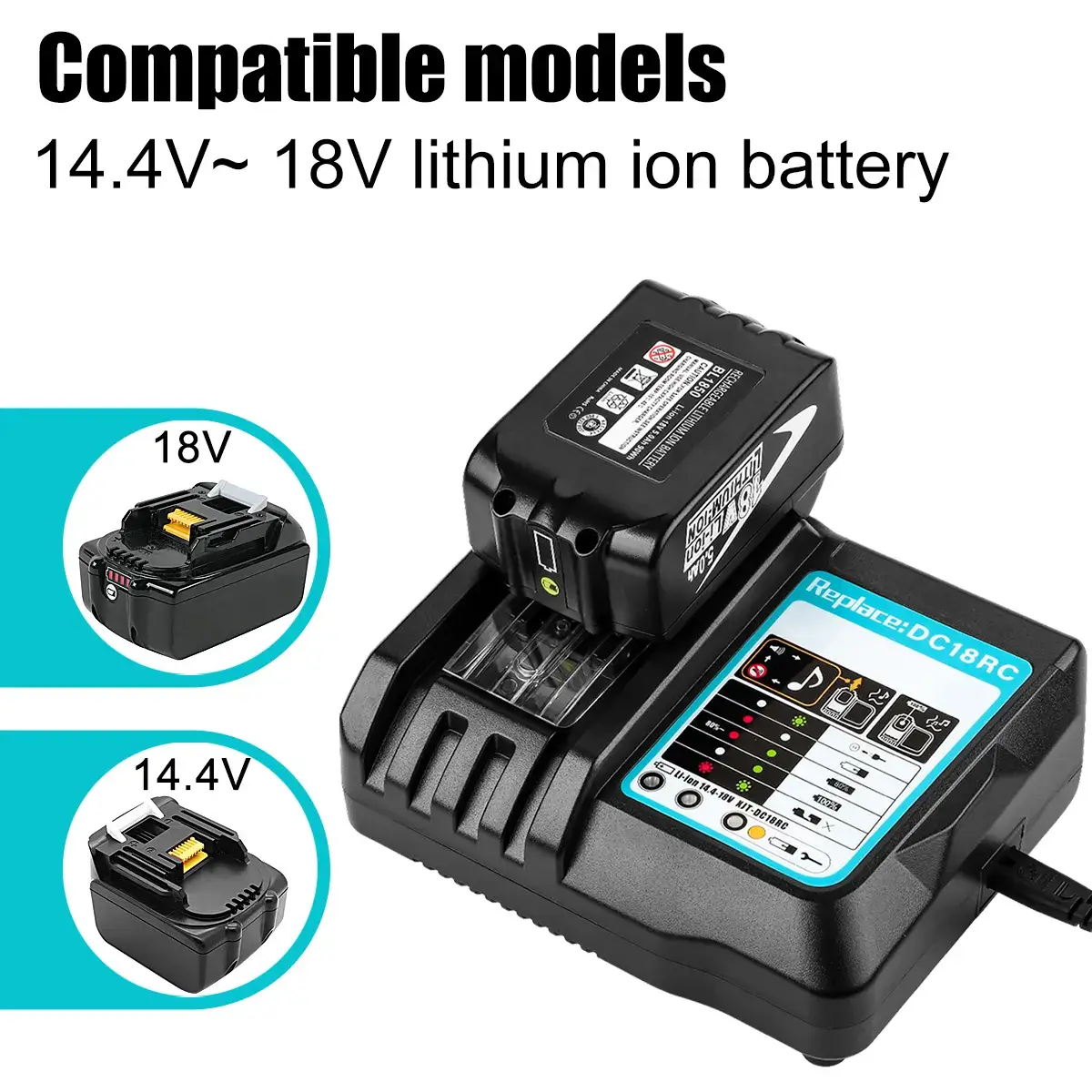Do Power Tool Battery Chargers Work With Any Brand?
Cross-brand charging demands fewer chargers, peak efficiency, and safety. This guide uses industry data and standards to assess compatibility—interfaces, electrical specs, BMS protocols, and certifications—to pick the right charging solution.

As cross-brand charging gains traction, users want fewer chargers, less clutter, and maximum efficiency without sacrificing safety. However, differences in physical interfaces, electrical specifications, BMS protocols, and certifications can make or break compatibility. This guide uses industry data and safety standards to help you evaluate, select, and implement the right charging solution.
1. How Are Charger–Battery Compatibility Factors Determined?
Compatibility hinges on four core factors:
| Factor | Key Metrics | Impact |
| Physical Interface | Slide-in (DeWalt), Star Connector (Milwaukee), Vertical Slot (Makita) | Lock stability, contact pressure |
| Electrical Specs | Nominal Voltage ±5%, Charge Current (A), Cell Count | Overcharge/undercharge risk, cell lifespan |
| BMS/Protocol | CAN, I2C, SMBus for handshake, balancing, and temperature monitoring | Smart charging, cell balancing, thermal control |
| Certifications | UL 1012, IEC 62368-1, CE | Regulatory compliance, liability protection |
> Industry Insight: According to the 2024 Cordless Tool Alliance survey, 85% of professional users cite “intelligent handshake and two-way communication” as the number-one requirement for safe cross-brand charging.

2. When Does Cross-Brand Charging Work—and When Doesn’t It?
✅ Safe Scenarios
Within a Single Platform Extension: e.g., DeWalt 20 V → FlexVolt auto-switching output
⚠️ High-Risk Scenarios
| Scenario | Reason |
| Voltage Mismatch | 18 V charger on a 24 V pack → overheating, chemical instability |
| Protocol Break | No BMS communication → no balancing, no temperature monitoring |
| Non-Certified Adapter | Lacks over-current/over-voltage protection → safety redundancy lost |
3. Available Cross-Brand Adapter Solutions
To bridge interface and protocol gaps, the market offers several adapter types:
| Type | Example Product | Key Features | Notes |
| Tool Adapters | Makita→Milwaukee Adapter Plate | Allows foreign batteries on tools | No BMS communication lines |
There are basically no power tool battery chargers on the market today that can charge across brands, so please do not be greedy for small gains and damage your own tools or even threaten your life.
4. Safe Alternatives and Recommendations
- OEM Multi-Port Stations: DeWalt DCB115, Milwaukee M18 Multi-Volt Station
- Enterprise Charging Racks: Custom firmware, centralized management, high-current fast charging
> Industry Insight: Rental fleets using enterprise-grade charging racks report a 40% reduction in tool failures over the equipment lifecycle.

5. Step-by-Step Compatibility Self-Check
1. Visual Match: Compare your battery’s contact layout against the brand-pin table below.
2. Voltage Verification: Use a multimeter to measure OCV; ensure it falls within ±5% of the rated voltage.
3. Test Charge: Charge idle for 10 minutes; temperature rise should not exceed 5 °C.
4. Protocol Handshake: Employ a BMS tester to confirm balancing and temperature feedback.
> Recommended Tools: Fluke 179 Digital Multimeter, Tektronix BMS Signal Tester.
6. Economic and Safety Analysis
| Option | Unit Cost (USD) | Supported Brands | Risk Level | Warranty |
| OEM Charger | 70–150 | 1 | Low | 12–24 months |
| XNJTG Charger | 35 | 5+ | Low | 12 months |
| Non-Certified Adapter | 20–30 | Varies | High | None |
- Cost Comparison: Universal chargers offer the best long-term value and lower maintenance costs.
- Warranty Coverage: Universal chargers include two-year BMS failure protection; OEM chargers cover only manufacturer defects.

7. FAQ
Q: Can I charge a DeWalt battery with a Makita charger?
A: Never directly. Only use a certified universal charger or OEM adapter to avoid over-voltage or protocol mismatches.
Q: Will using the wrong charger void my warranty?
A: Yes. All OEM warranties exclude non-factory or uncertified charging equipment.
Q: How do I reset a battery after a failed charge?
A: Disconnect, allow the pack to cool to room temperature, then retry a low-current charge or use the OEM BMS reset utility.
Q: What is the best universal charger for mixed fleets?
A: The XNJTG Charger: multi-protocol support, UL/IEC certification, and enterprise-grade management software.